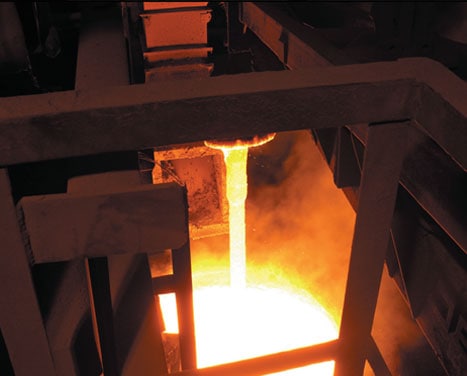Belt casting project offers prospect of advanced steels and steel alloys
Steel production, vital to industries such as transportation and construction, is an extremely expensive and energy-intensive process.


Now an EPSRC-funded project, led by Warwick Manufacturing Group at Warwick University, is investigating the use of a new technology that could dramatically reduce the cost and amount of energy consumed by the process.
The Assure 2 project, which also involves McGill University in Montreal, Canada, and Tata Steel, could allow new advanced steels and steel alloys to be produced using the technology, which is known as belt casting.
In conventional steel production, the molten material is cast into continuous slabs of around 250 millimetres in thickness. These are cut into lengths, hot rolled, and then cold rolled, ultimately producing a strip of around 1mm thickness.
This is extremely energy-intensive, and steel makers have been investigating ways to improve the efficiency of the process by directly casting a thin strip of steel, according to Prof Claire Davis at WMG, who is leading the project.
“In belt casting you cast a strip directly onto a moving belt,” said Davis. “This strip is around 5-10mm thick, so there is very little rolling required to produce a product for the automotive industry, for example.”
Register now to continue reading
Thanks for visiting The Engineer. You’ve now reached your monthly limit of news stories. Register for free to unlock unlimited access to all of our news coverage, as well as premium content including opinion, in-depth features and special reports.
Benefits of registering
-
In-depth insights and coverage of key emerging trends
-
Unrestricted access to special reports throughout the year
-
Daily technology news delivered straight to your inbox










Water Sector Talent Exodus Could Cripple The Sector
Maybe if things are essential for the running of a country and we want to pay a fair price we should be running these utilities on a not for profit...